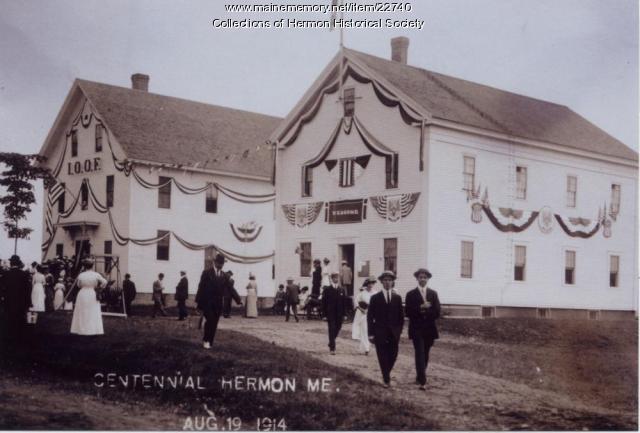Keywords: Building plans
- Historical Items (190)
- Tax Records (19147)
- Architecture & Landscape (444)
- Online Exhibits (74)
- Site Pages (147)
- My Maine Stories (17)
- Lesson Plans (3)
Lesson Plans
Your results include these lesson plans. Your results include these lesson plans.
Lesson Plan
Building Community/Community Buildings
Grade Level: 6-8
Content Area: Social Studies
Where do people gather? What defines a community? What buildings allow people to congregate to celebrate, learn, debate, vote, and take part in all manner of community activities? Students will evaluate images and primary documents from throughout Maine’s history, and look at some of Maine’s earliest gathering spaces and organizations, and how many communities established themselves around certain types of buildings. Students will make connections between the community buildings of the past and the ways we express identity and create communities today.
Lesson Plan
Portland History: The Portland Observatory and Thermometrics
Grade Level: 3-5, 6-8
Content Area: Science & Engineering, Social Studies
Thermometrics is a term coined by Moody to describe his weather recording activities. Included here are some cross-curricula lesson plans and activities for students to use their knowledge in science, math and social studies while acting as weather forecasters. Check out the web-sites listed in this section for information on building your own barometer and anemometer.
Lesson Plan
Longfellow Studies: The Writer's Hour - "Footprints on the Sands of Time"
Grade Level: 3-5
Content Area: English Language Arts, Social Studies
These lessons will introduce the world-famous American writer and a selection of his work with a compelling historical fiction theme. Students take up the quest: Who was HWL and did his poetry leave footprints on the sands of time? They will "tour" his Cambridge home through young eyes, listen, and discuss poems from a writers viewpoint, and create their own poems inspired by Longfellow's works. The interdisciplinary approach utilizes critical thinking skills, living history, technology integration, maps, photos, books, and peer collaboration.
The mission is to get students keenly interested in what makes a great writer by using Longfellow as a historic role model. The lessons are designed for students at varying reading levels. Slow learners engage in living history with Alices fascinating search through the historic Craigie house, while gifted and talented students may dramatize the virtual tour as a monologue. Constant discovery and exciting presentations keep the magic in lessons. Remember that, "the youthful mind must be interested in order to be instructed." Students will build strong writing skills encouraging them to leave their own "footprints on the sands of time."




